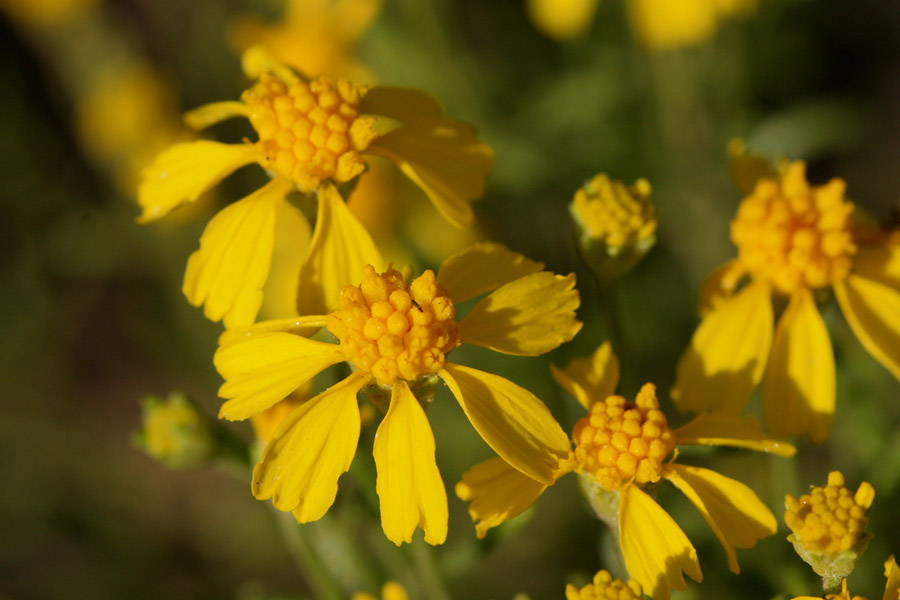Selected Plants of Navajo Rangelands
Pingue

Pingue is common lower elevation perennial sub-shrub or herb native to much of the west. Pingue is similar to rubberweed in appearance. It grows to a height of just under two feet, with thick, woody stalks. The leaves are mostly basal and are highly dissected. The flowerheads are raised above the leaves on long stems. The inflorescence has yellow rays and a yellow disc, much like sunflowers, to which pingue is related. It flowers June to September. Pingue has bits of wooly growth both at stem bases and near the crown of the plants. It likes rocky hillside habitats at middle elevations.
Pingue is not palatable to livestock, but under forage shortage may be readily eaten by sheep and goats. It is toxic to livestock, particularly sheep, though cattle also can be affected. It is especially toxic to sheep. The best control is good grazing management.
Its stems and leaves have been used as a tea. Its roots have a milky sap that contains latex, and has been used as chewing gum. The stems and leaves have also been used as a poultice for wounds.


©2018 NMSU Board of Regents.
Individual photographers retain all rights to their images.
Partially funded by the
Western Sustainable
Agriculture Research and Education Program
(westernsare.org; 435.797.2257),
project EW15-023.
Programs and projects supported by Western SARE are
equally open to all people.